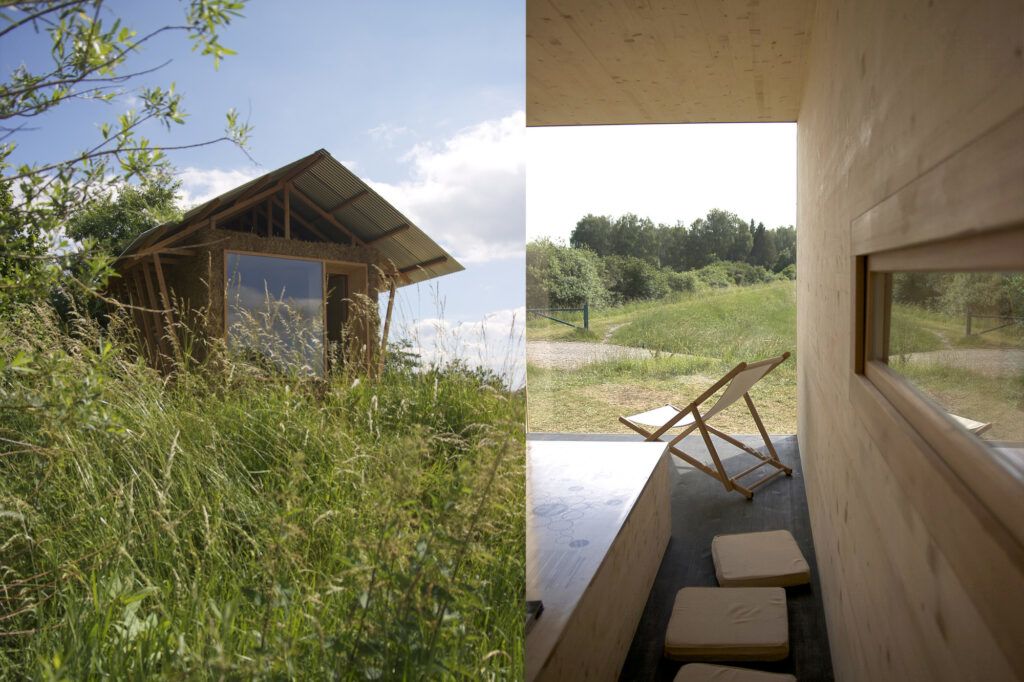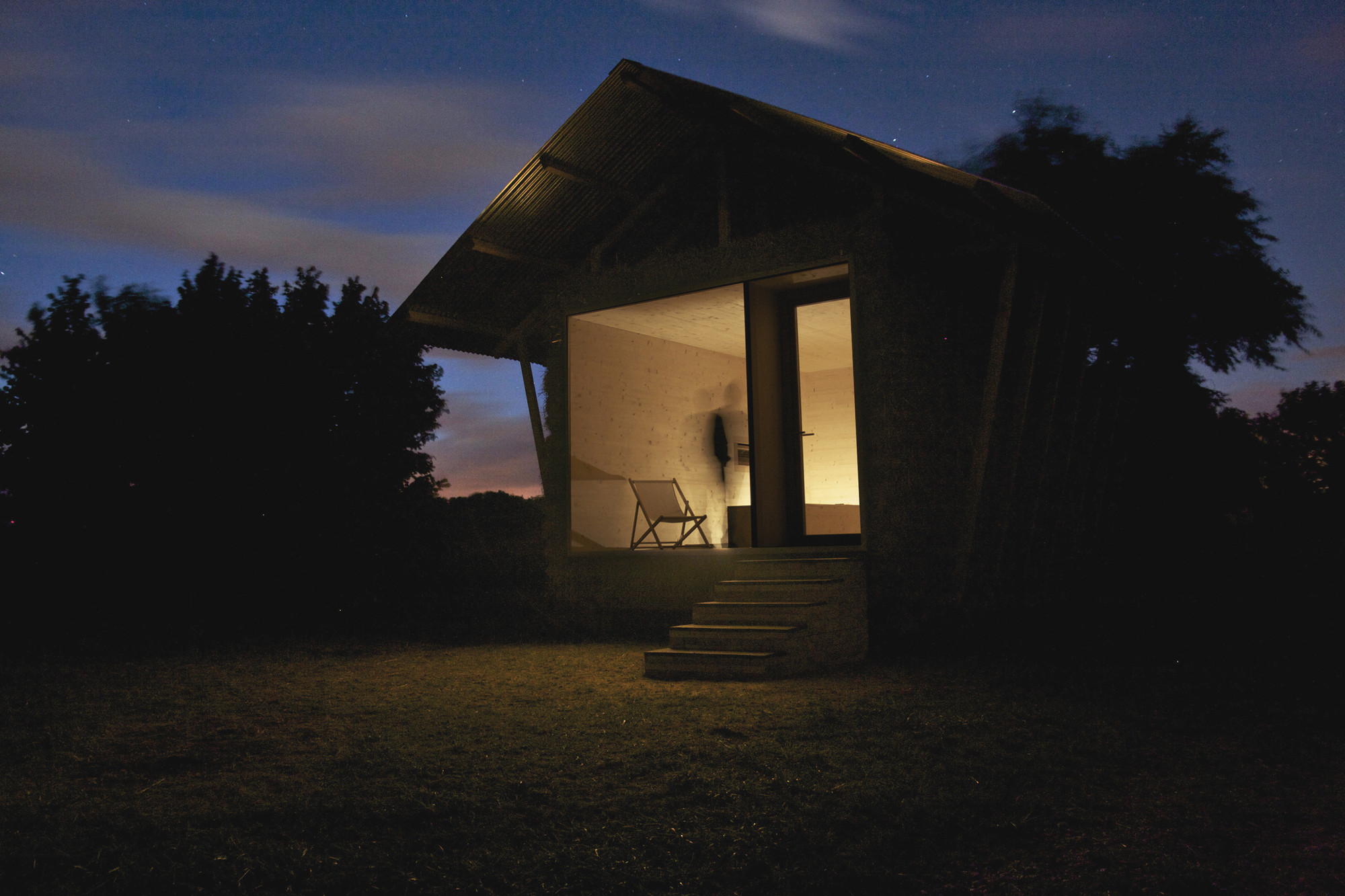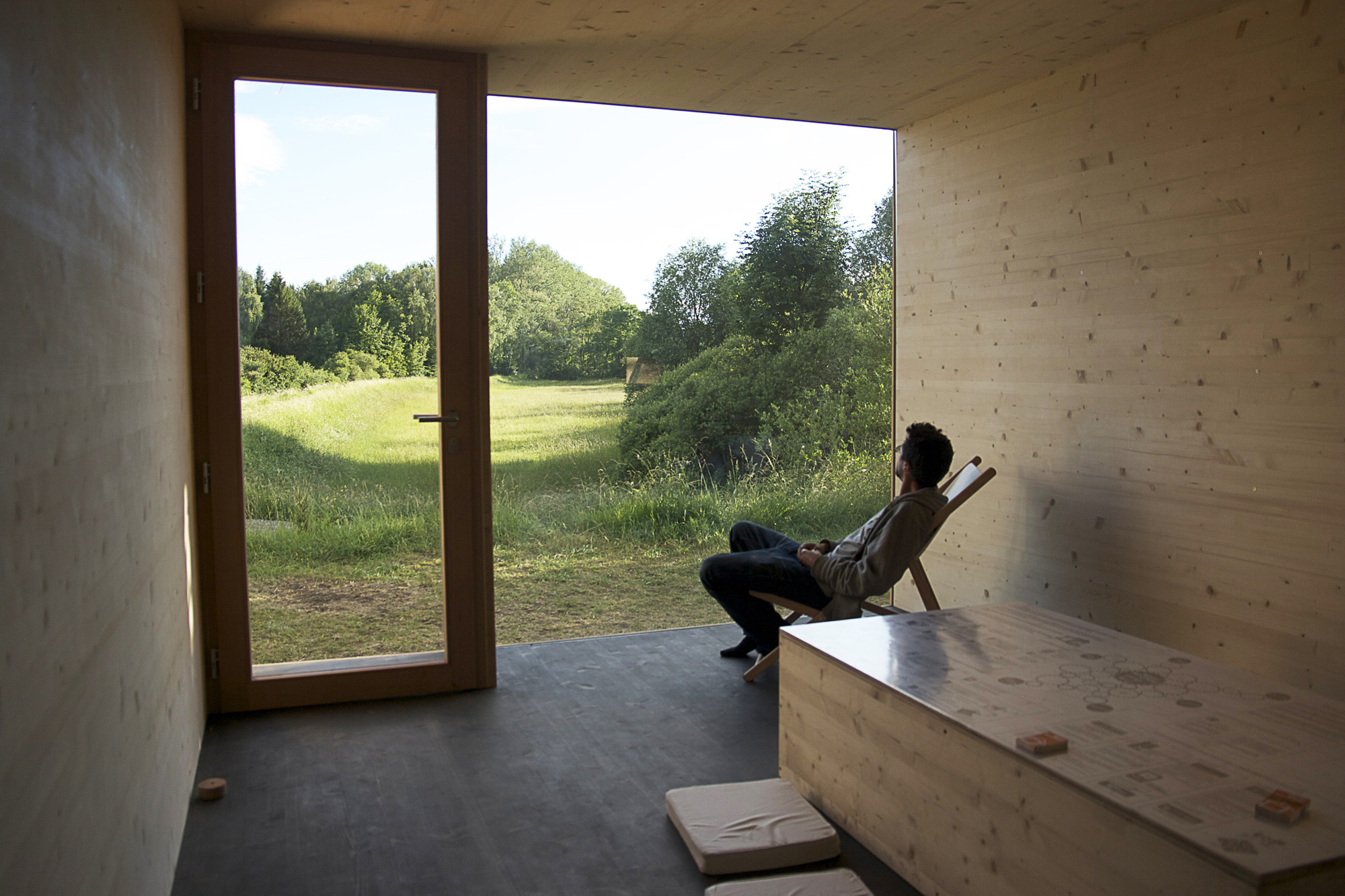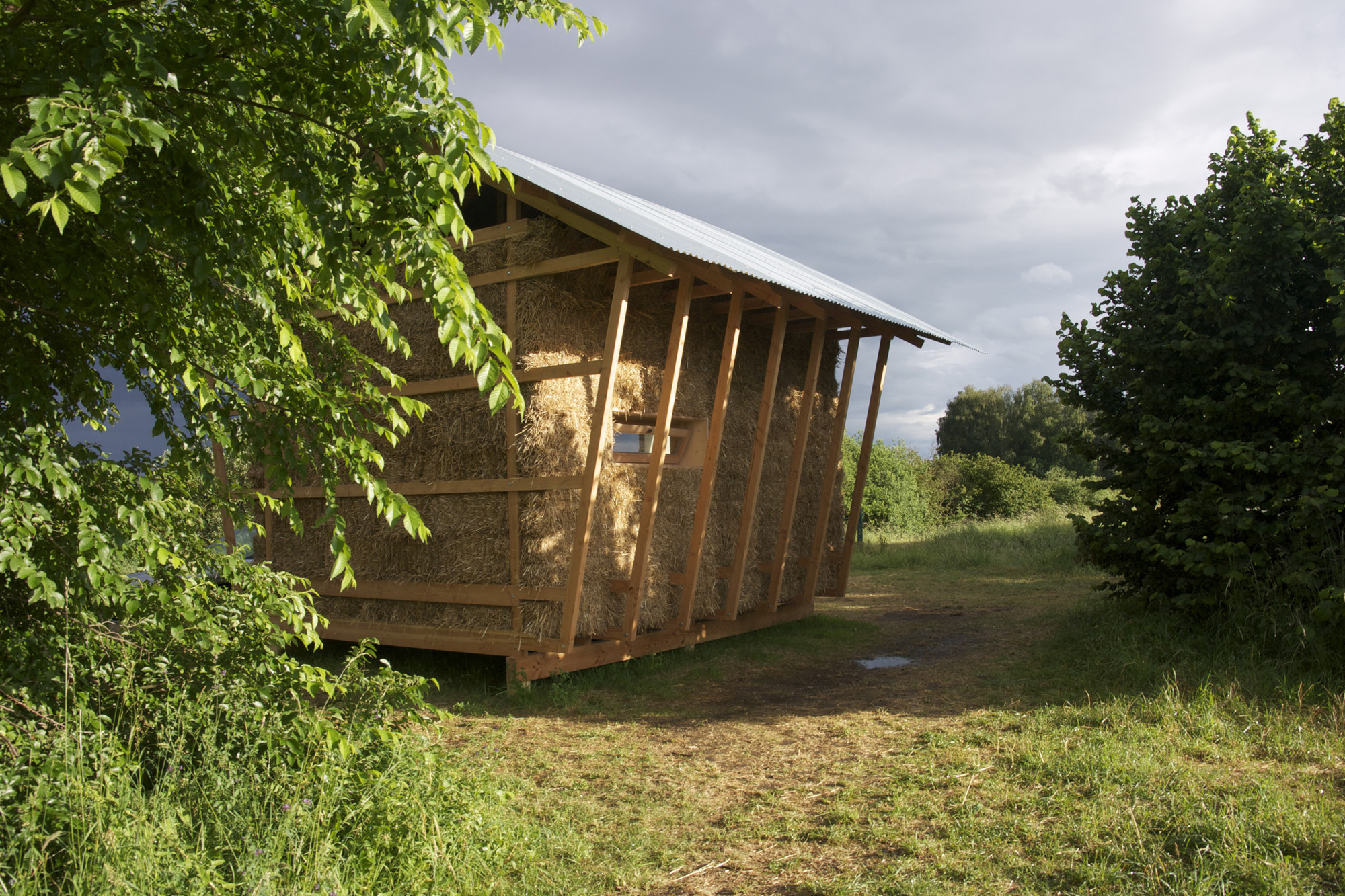Eco-Friendly Pavilion with Regional Style

Green is great in theory, but few projects manage to blend both an environmental mission with an elegant-yet-relevant aesthetic as well as this modest ecological project by Studio 1984.
Set in rural Alsace, France, the architecture of this tiny house made with straw bale references local traditions and vernaculars with its visible wood framing, simple metal roof and straw-based exterior, but balances these with a minimalism of detail and modern-scale fenestration built to purpose.
The result is recognizably contemporary while also being respectful of context and history. Images of the area show what drove the inspiration, but the creative ways original tropes are transformed in the new structure as well.
From the firm:
“ In search of the architecture of the lesser impact, the “nest” is largely inspired by agricultural vernacular constructions. Its familiar shape and texture pay homage to traditional barns and are an attempt at restoring their discreet charm.”
“This pastoral imagination dictates the choice of local materials widely available such as straw and wood, the environmental impact of which are virtually nil. The reference to rural heritage far from generating an archaic habitat is the support for technical innovations in terms of comfort, ambiance, and energetic efficiency.”

“A strong ecological requirement in materials used for construction as well as in the long-term use of the building were our main concerns for this original event. As such the use of local, healthy, recyclable, and efficient materials were required.”
“Enhancement of local economic fabric also contributes in making this experience a model of sustainable, responsible and ecological development. Through this project, we have tried to bring our contribution to reflections based on architectural quality. In a project approach that we want the most comprehensive possible, we have experienced a locally relevant and suitable for development response.”







